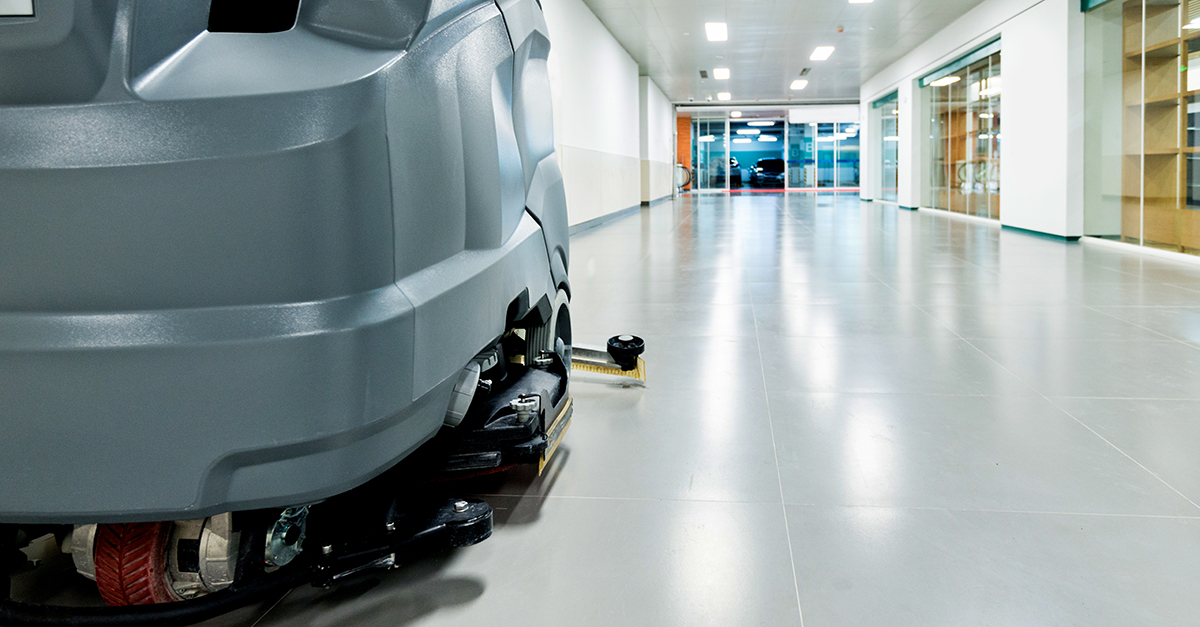The cleaning industry offers tremendous growth potential for building service contractors (BSCs) while enabling in-house facility managers to align more closely with their organizations’ strategic business goals. However, many obstacles stand in the way of fully realizing these opportunities.
As cleaning leaders strive to meet rising expectations for cleanliness, staffing shortages remain their biggest challenge. Among CMM’s 2025 In-House/Facility Management Benchmarking Survey respondents, 75% listed reducing employee turnover as an important issue. Half of CMM’s 2024 Building Service Contractor Benchmarking Survey respondents chose recruiting and retaining staff as their top business challenge. These staffing shortages are directly linked to the second-greatest challenge: controlling costs to maintain profitability.
Autonomous mobile robots (AMRs) are rapidly becoming a go-to solution for tackling all these challenges at once. AMRs help streamline operations, enhance cleanliness, and reduce the
strain of manual labor. In turn, the global market for cleaning robotics is projected to grow at a compound annual growth rate (CAGR) of 22.9% from 2024 to 2030, according to a market analysis
report from Grand View Research.
However, successful integration requires a strategic approach. Three field-tested strategies can help facilities and cleaning businesses streamline the transition from pilot program to profitable AMR deployment.
1. Start small and scale up when ready
You wouldn’t immediately roll out a new cleaning product across your entire operation. Likewise, a prudent approach to introducing robotics is to begin with a small, controlled pilot program. This
approach brings three key benefits:
- Lower risk: A small pilot program lets you test the technology in a real-world environment without requiring a significant up-front investment. This minimizes financial risk and helps you evaluate if robotics suits your needs.
- Better processes: The pilot program allows you to identify and address any operational or logistical challenges before scaling up. This might involve optimizing cleaning routes, adjusting workflows, or fine-tuning settings.
- A foundation of good data: Your pilot program should also give you valuable performance data in a controlled setting. This data will inform your scaling strategy and help you make informed decisions about future AMR deployments.
Once your pilot program proves successful, gradually expand AMR adoption to other areas of your facility. This phased approach minimizes disruption to existing operations and enables
continuous improvement based on real-world feedback.
2. Prioritize operator buy-in
Deploying robotic cleaning equipment will undoubtedly bring significant change to the workplace. More importantly, staff often perceive robots as a threat to job security. Reassuring employees that robotic cleaners are tools to empower (rather than replace) them is critical. Gaining broader buy-in from your operators is also essential to the success of your AMR program. Keep the following best practices in mind.
- Engage employees early: Involve your team in the decision-making process. Address any concerns they may have and actively solicit their feedback. This fosters a sense of ownership and encourages collaboration.
- Offer training to empower employees: Provide comprehensive training on operating, interacting with, and managing the robotic cleaning equipment. Empower your team with the knowledge and skills to work effectively with this new technology.
- Show employees how robots help and add value: Clearly communicate the benefits of autonomous cleaning robots to your staff. Emphasize how the machines can reduce
their physical workload, improve safety, and free them to focus on higher-value activities, such as detailed cleaning and customer service.
When employees understand the value of robots and how they can enhance their work experience, they advocate for the technology. This leads to smoother adoption, faster scaling, and a more
successful deployment overall.
3. Choose a robotics partner with real-world success
The rapid growth in cleaning robotics has led to more options than ever. However, as more technology providers enter the market, the downside is that it gets harder to vet proven leaders from companies merely jumping on the trend without the necessary experience. Here are some tips for choosing a robotics partner that can help you build and scale up your AMR program:
- Expect comprehensive support: Deploying robots is not a one-size-fits-all, plug-and-play exercise. You will want a partner who can provide comprehensive support throughout the entire lifecycle of your AMR program. This includes reliable technical support, comprehensive training resources, and ongoing assistance to help you adapt to evolving needs.
- Look for accessible expertise: Structured training and support are essential, but when unexpected and unique challenges arise, you want a direct connection to experts who can solve your problems. Ensure your partner provides readily accessible support channels, including online resources, phone support, and on-site assistance. This minimizes downtime and allows you to resolve any issues quickly.
- Evaluate the innovation roadmap: Robotics, automation, and AI are evolving quickly. To ensure your robotic investment is future-ready, choose a robotic partner with a well-defined plan (and well-defined resources) for innovation and ongoing development. This will keep your autonomous robots ahead of the curve and deliver value for years to come.
A strong partnership with your robotics provider is an investment in your success. It ensures you have the support and resources needed to maximize the benefits of your AMR implementation and achieve your cleaning goals.
Implementation drives success
Over the next two years, AMRs will rapidly evolve from a cutting-edge innovation to an essential technology for competitive cleaning operations. Their ability to address labor shortages, rising
costs, and increasing demands for efficiency and productivity will be the make-or-break factor for an increasing number of cleaning teams. However, it is not just the robots themselves that will determine success; it’s the implementation process.
By investing time upfront to create a thorough rollout process, you can avoid major headaches and enable your team to focus on what they do best: supporting your customers.



